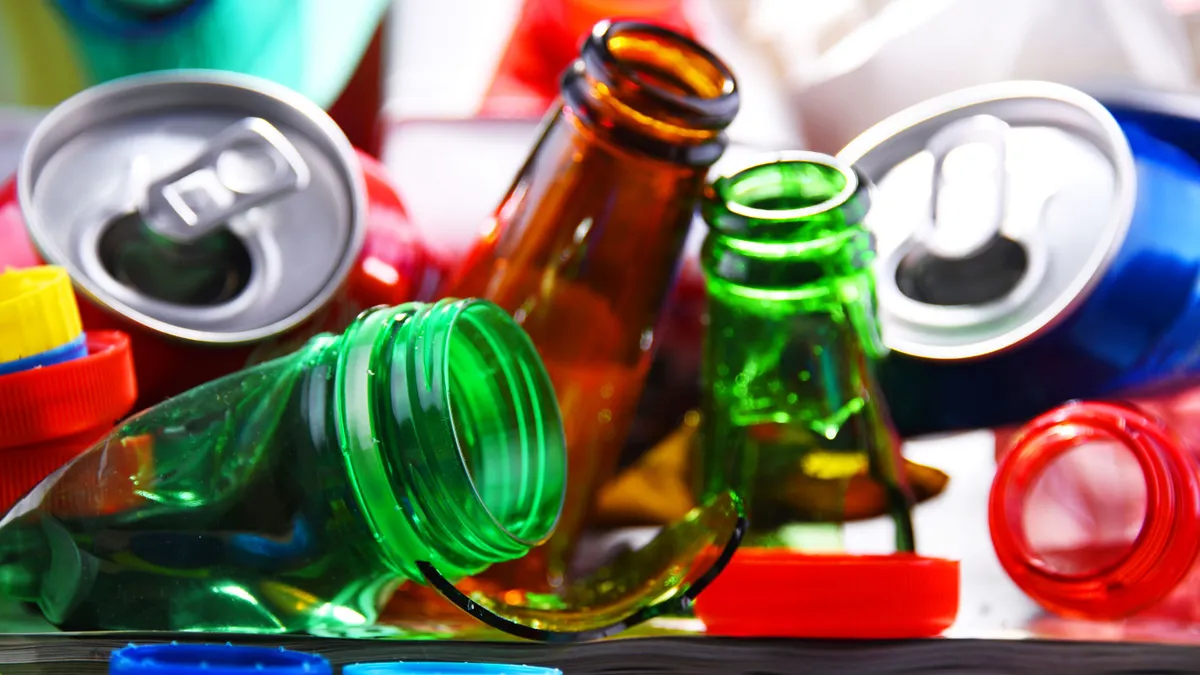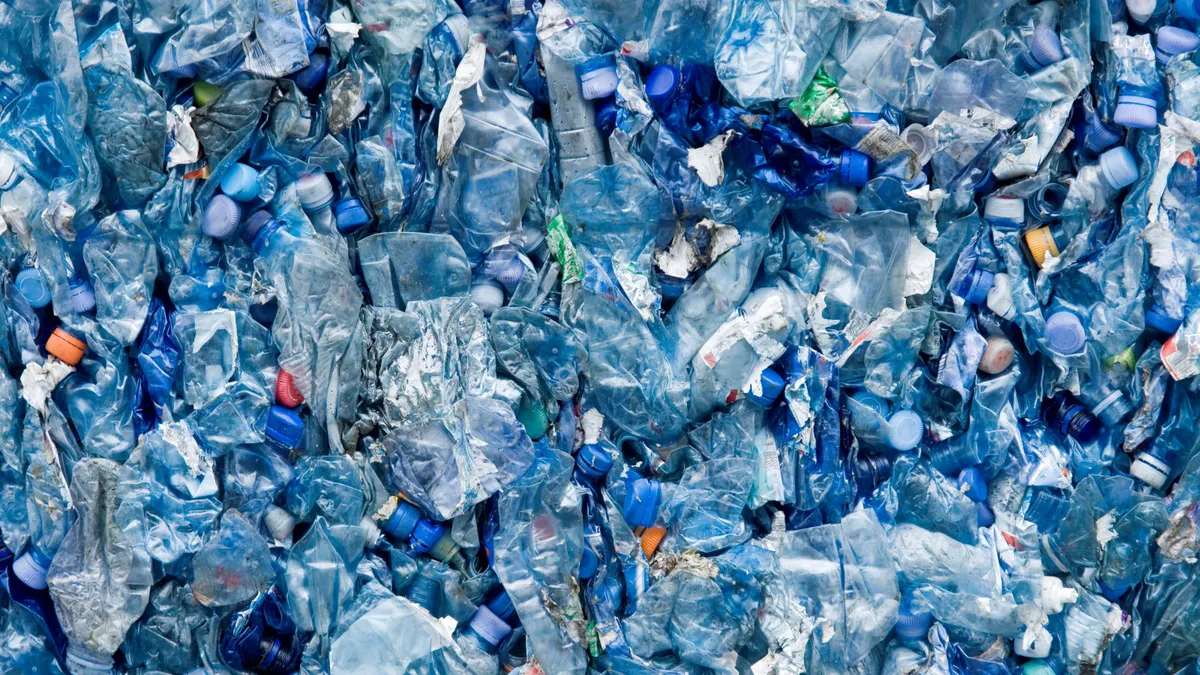While debates over extended producer responsibility (EPR) programs for packaging have been firing up state legislatures recently, a smaller system for architectural paint has been quietly gaining scale. Lessons from that 20-year effort may not be directly applicable to today's packaging debates, but they offer a unique case study on navigating producer involvement.
"It has been the standby. It's always been consistent, there’s always interest. But each year, there's something new that just far surpasses paint" as a priority for end-of-life product management, said Scott Cassel, the CEO and founder of the Product Stewardship Institute (PSI).
The fact that paint EPR manages to capture at least some legislative attention every year is a testament to how doggedly the industry has pursued the program. Today, 10 states and Washington, D.C., have passed legislation governing paint EPR programs, and the nonprofit PaintCare operates the program in each of those places.
The American Coatings Association (ACA) manages PaintCare with funding from paint manufacturers, who pass the costs on to stores stocking their products. The stores charge customers fees that hover around 75 cents per gallon; those fees essentially reimburse the manufacturers. PaintCare uses the money to collect leftover paint and find businesses to make use of it.
The U.S. generates roughly 75 million gallons of excess architectural paint every year, according to PSI estimates. In 2020, that was about 9% of all architectural paint sold, according to an October 2020 ACA forecast. (While excess industrial paint also requires management, industry experts say it’s less of a concern because usage needs are more closely calculated.) Since the first state law passed in Oregon in 2009, PaintCare has collected 50 million gallons of leftover paint and spent about $240 million.
Getting paint stewardship off the ground in the U.S. took nearly eight years. PSI first started discussing a stewardship program with the ACA in the early 2000s. By 2009, the Paint Product Stewardship Initiative had two memorandums of understanding among the ACA, five paint manufacturers, eight state governments, 31 local governments and various other related groups about rolling out PaintCare on a phased implementation schedule. Many parties were involved, but ultimately the legislation exists because the ACA wants it to, Cassel said.
"There's no other industry that is proactively supporting EPR in the United States," he said. "This is a good news story for the industry. It allows them to put on the white hat."
Even with industry support and more than a decade of experience, passing paint EPR legislation in additional states has not been easy: Washington, the most recent state to start PaintCare, attempted to pass a law for about eight years. New York, the most recent state to sign PaintCare into law, is currently setting up its program, and other states might soon participate. Massachusetts hosted a hearing for a PaintCare bill in late June, and both halves of the New Jersey legislature have passed versions of the law.
PaintCare's evolution
Cassel and others suspect that some of the paint industry’s openness to EPR stems from the desire to take a different approach on this waste stream after a history of legal disputes over other environmental issues.
States sued certain manufacturers for the cost of cleaning up lead paint contamination in the early 2000s, and some legal battles are still going. More recently, the Federal Trade Commission charged paint brands with deceptively promoting some products as having zero volatile organic compounds, additives that are sometimes considered carcinogens.
An ACA spokesperson said PaintCare’s formation wasn't connected with the legal actions, however, because those were "individual company efforts," and its formation had nothing to do with seeking positive publicity. Instead, the group said this came from a "collaborative dialogue" between public- and private-sector representatives that "was not controlled by the paint industry or ACA."
For states, the appeal of an industry-led paint stewardship program may be in part due to the mess and inconvenience of the material.
Megan Warfield, the moderate risk waste coordinator for Washington state’s Department of Ecology, said if she could pick a product to create a stewardship program for, paint would not be the first item on her list. Certain operators in Washington said they wanted to focus on more problematic products, like pesticides, corrosive or flammable materials and oil-based paint — the more environmentally harmful, but less popular, paint option on the market.
Handling paint is still a burden, Warfield said. Before the stewardship program began, some localities had dropped latex paint collection because it was too expensive to manage. Also, telling consumers that they have to dry out latex paint with kitty litter or mix it with hardener was considered a lot to ask. Improper disposal was a risk, too. People might tip the leftover paint into storm drains and sinks, or chuck it into their trash, where it could leak in garbage trucks and seep into landfill leachate.
"Is paint the most hazardous thing on the planet? Probably not," Warfield said. "Is it a good product for product stewardship? 100%."
Retailer opposition to placing new fees on products played a role in the long legislative process, but with the Washington program's launch April 1, Warfield and her colleagues are finally learning how paint stewardship looks.
Though she and her team won’t receive an official statistics report until next year, residents are flooding some PaintCare drop-off sites with containers. Warfield thinks this is the byproduct of people having old paint cans lying around, plus the results of pandemic cleanups or do-it-yourself projects. Programs in other states have seen sustained drop-off activity years after starting.
The surge of interest in PaintCare in Washington has made planning for future operations challenging, in part because not enough centers were open at launch. The PaintCare law in the state requires that every resident be within 15 miles of a drop-off facility. PaintCare is still adding locations, which means future drop-off habits might change. Warfield said it will be hard to predict necessary collection frequencies until pandemic volumes and program locations settle.
Further, retailers had a lot of change to cope with during the early phases of the pandemic, said Heidi McAuliffe, ACA's vice president of government affairs. In her view, PaintCare might sound like an extra, unnecessary burden to some legislators when businesses are already facing pandemic limitations, unemployment compensation, and conversations about bag bans, taxes or raising the minimum wage.
Despite pandemic-induced challenges, several state legislatures introduced plans for paint EPR this year, and some states with existing programs are asking for modifications. One of the biggest requests is to have the program cover products sold in aerosolized containers, Cassel said. States also want to give other stakeholders, like environmental advocacy groups, local governments and recycling industry representatives, seats on advisory committees.
EPR learning curve
As PaintCare expands and matures, it may also face new expectations. For example, stakeholders have started asking for more data on how much paint gets recycled. Currently, about 70% of what’s collected becomes new paint. Further expansion could theoretically make paint recycling a more "circular" operation, something local governments have started to pursue with other EPR programs.
Heidi Sanborn has a few other lessons for states that want to implement new EPR programs for paint. Sanborn, the founding executive director of the National Stewardship Action Council, was involved in the implementation of California’s paint EPR program in the early 2010s. One lesson is to be clear about where collected paint will go. California expected all collected paint bound for recycling to go to local paint recyclers. Instead, PaintCare shipped much of it to the Midwest, where processing was cheaper, Sanborn said, which dented the profits of local recyclers.
Plans for the final product are another factor. Sanborn says she and her colleagues believe PaintCare was pushing for recycled paint products from some areas to be sold abroad. "There is a risk, when you put the producers who have originally produced the virgin product in charge of the program… they may not want it to sell against their virgin product," she said. While it’s good the recycled paint is getting used, Sanborn wonders if sending the paint to international instead of domestic markets could be negating any of the emissions savings gained by recycling it in the first place.
ACA responded that PaintCare’s focus is on "achieving the best recycling and processing outcomes at an affordable cost." Outcomes can vary, it said, in part because transport and processing services are bundled in the program’s vendor contracts. Because costs and recycling rates may vary among different options, the group said this "may sometimes mean that an out-of-state processor can offer the best mix of high recycling rates and overall cost."
The group dismissed the assertion that it wants to prevent recovered paint from competing with virgin paint, calling the idea "entirely without merit because the processors that receive PaintCare’s collected material decide where to market their products," and its "sole concern" is finding viable markets.
Another lesson California learned is that its program allows the industry to use PaintCare funds to sue the state over program regulations. Because PaintCare also refunds to the state any fees the government incurrs related to the program, the EPR money also paid the legal team defending California. Sanborn said these programs "should not be piggy banks for litigation." Officials have since tried to change the EPR model to prohibit those uses of funds, and successfully made that change in the California mattress EPR program.
PaintCare’s spokesperson said that because fees are the only source of revenue, "all program costs are paid for using program funds, including legal fees, as well as the administrative fee billed to PaintCare by CalRecycle for its oversight of the program." The group noted it now has a productive relationship with CalRecycle after resolving the litigation.
A portion of PaintCare that likely won’t change is the fee placed on consumers. On the whole, the ACA hears that states like their PaintCare programs and think the organization is doing a good job, McAuliffe said. The ACA doesn’t get much grumbling about the added fee on the paint, though she said some retailers might hear complaints from customers. Both Cassel and Warfield also think it's unlikely for the costs of paint EPR to be internalized, barring clear signs the current model wasn’t working.
Warfield wasn’t there for early conversations about the program in Washington, but she thinks, outside of fee discussions, the next priority for the state would be to make PaintCare extremely convenient. That’s probably why there are mandated drop-off sites and zero payments at the time of return, she said.
“Anyone paying should have access, period, and shouldn’t have to drive two hours to get to a site,” Warfield said.
In terms of what this all may mean for other types of EPR currently being considered, Sanborn said the paint model isn't directly applicable.
"If you were to collect money on every single package, think about that from a retailer’s perspective. It’s a nightmare," she said. But even if the cost of end-of-life management for packaging is ultimately put on consumers, companies are expected to resist having the price of EPR embedded in the shelf price of an item because it would look like an added expense.
Instead of the current funding structure for paint EPR — a cost per volume, no matter the paint variety — Sanborn supports an eco-modulated fee, something Cassel said future states interested in PaintCare might request. In this scenario, more toxic or challenging-to-recycle materials come with a higher EPR fee. The intent is to incentivize manufacturers to make less-harmful products that they can sell for a lower price.
Sanborn thinks the day is coming when governments will require improved end-of-life outcomes for all kinds of products. If companies think through the process of end-of-life management before anything hits the market, that’s ideal.
"If you don't, chances are very good you're going to get in the crosshairs pretty quick," she said.

















